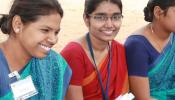Originally posted by the International Trachoma Initiative.

Trachoma is an infectious eye disease caused by the bacterium Chlamydia trachomatis, which spreads by contact with an infected person’s hands or clothing. It is the world's leading cause of preventable blindness and is one of the oldest diseases known to man.
Trachoma was once endemic in Europe and the United States. European immigrants to America had their eyelids flipped and examined upon arrival at Ellis Island in New York. Nine of 10 immigrants diagnosed with active trachoma were returned to their home countries. Trachoma disappeared in Europe, even before antibiotics, because of improved living standards. Today, it is believed to be endemic in 51 countries, often affecting the poorest of the poor.
The number of people living in trachoma-endemic districts was estimated to have reduced from 314 million in 2011 to 229 million in 2013, according to the World Health Organization. The 2014 estimate for the global population at risk is 232 million but is based on significantly more data than previous estimates. More than 80% of the burden of active trachoma is concentrated in 14 countries, where immediate action is needed.
Infections of the conjunctiva start in early childhood. People infected with trachoma do not instantly go blind. The disease manifests gradually, with repeated infections over childhood leading to scar formation of the conjunctiva of the upper eyelid. This causes the eyelashes to turn inward and scratch the cornea. This may lead slowly and painfully to complete blindness.
The poorest of the poor suffer most from trachoma, especially in areas that have limited access to water and sanitation. Africa is the most affected continent. Because trachoma is transmitted through close personal contact, it tends to occur in clusters—often infecting entire families and communities.

Trachoma Destroys Families
Trachoma can destroy the economic well-being of entire communities, keeping families shackled within a cycle of poverty as the disease and its long-term effects pass from one generation to the next.
Globally, trachoma results in an estimated US $2.9 billion in lost productivity per year. Blindness from trachoma strikes adults in their prime years, hindering their ability to care for themselves and their families.
Women, traditionally the caretakers of the home, are twice as likely as men to have trichiasis. When a woman can no longer perform vital activities for her household, an older daughter is often removed from school to assume her mother’s duties, thus losing her opportunity for a formal education.
A Hidden Disease
Though trachoma is widespread, it is also little-known outside of affected communities. Trachoma mainly thrives in isolated rural communities where people live with limited access to water and health care. In some communities, the disease is so common that blindness from trachoma is simply accepted as a fact of life.
The disease spreads easily, primarily from child to child, and child to caregiver. The disease begins in childhood, and initially the infection clears up on its own. But repeated infections cause inflammation and scarring of the conjunctiva. Scarring causes the upper eyelid to turn inward, which causes the eyelashes to rub on the cornea. This leads to corneal abrasions, corneal scarring, opacification and ultimately blindness, usually in adulthood. However blindness from trachoma has also been seen in children much younger.

A Preventable Disease
Trachoma is treatable and preventable with a multifaceted approach known as the SAFE strategy.
Recommended by the World Health Organization, the SAFE strategy is a comprehensive public health approach that combines treatment (Surgery and Antibiotics) with prevention (Facial-cleanliness and Environmental improvement).
Antibiotic treatment will provide a short-term cure, especially when the whole community is treated, but reinfection occurs usually within six months. This is why it is essential that the full SAFE strategy be in place in trachoma-endemic communities.
Even if trachoma is eliminated, trichiasis surgery will remain necessary for the population already affected and with scarring of the conjunctiva and in-turned eyelashes.

Seva’s programs help combat Trachoma by providing eye care to people in remote communities. Establishing sustainable permanent eye care centers ensures that people get diagnosed and treated before infections become frequent and cause Trachoma. In addition, eye screenings in remote communities, orphanages and schools can help stop the conjunctivitis infections that ultimately lead to blindness by Trachoma.
For $15, you can help provide the antibiotic medicines that prevent trachoma in adults or for $50 help provide an eye screening in an orphanage or school.


